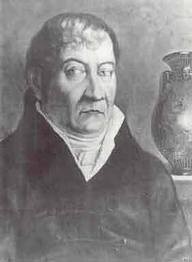Joseph Hardtmuth on:
[Wikipedia]
[Google]
[Amazon]
 Joseph Hardtmuth (13 February 1758, Asparn an der Zaya – 23 May 1816,
Joseph Hardtmuth (13 February 1758, Asparn an der Zaya – 23 May 1816,
The Koh-i-noor company website
- ChartPak's write up 1758 births 1816 deaths People from Mistelbach District 18th-century Austrian people Austro-Hungarian people Austrian inventors Austrian architects Austrian industrialists {{Austria-bio-stub
 Joseph Hardtmuth (13 February 1758, Asparn an der Zaya – 23 May 1816,
Joseph Hardtmuth (13 February 1758, Asparn an der Zaya – 23 May 1816, Vienna
en, Viennese
, iso_code = AT-9
, registration_plate = W
, postal_code_type = Postal code
, postal_code =
, timezone = CET
, utc_offset = +1
, timezone_DST ...
) was an Austrian
Austrian may refer to:
* Austrians, someone from Austria or of Austrian descent
** Someone who is considered an Austrian citizen, see Austrian nationality law
* Austrian German dialect
* Something associated with the country Austria, for example: ...
architect
An architect is a person who plans, designs and oversees the construction of buildings. To practice architecture means to provide services in connection with the design of buildings and the space within the site surrounding the buildings that h ...
, inventor
An invention is a unique or novel device, method, composition, idea or process. An invention may be an improvement upon a machine, product, or process for increasing efficiency or lowering cost. It may also be an entirely new concept. If an ...
and entrepreneur.
Inventions
In 1789, he invented a new kind ofearthenware
Earthenware is glazed or unglazed nonvitreous pottery that has normally been fired below . Basic earthenware, often called terracotta, absorbs liquids such as water. However, earthenware can be made impervious to liquids by coating it with a ce ...
with a lead-free glaze for tableware production, the so-called Vienna ware. In 1810, he invented an artificial pumice
Pumice (), called pumicite in its powdered or dust form, is a volcanic rock that consists of highly vesicular rough-textured volcanic glass, which may or may not contain crystals. It is typically light-colored. Scoria is another vesicular vol ...
and years later, a version of stoneware which was used to make mortars, funnels, and other utensils. A flexible, unbreakable blackboard
A blackboard (also known as a chalkboard) is a reusable writing surface on which text or drawings are made with sticks of calcium sulphate or calcium carbonate, known, when used for this purpose, as chalk. Blackboards were originally made of ...
was also produced.
In 1792, Hardtmuth established a pencil
A pencil () is a writing or drawing implement with a solid pigment core in a protective casing that reduces the risk of core breakage, and keeps it from marking the user's hand.
Pencils create marks by physical abrasion, leaving a trail ...
factory in Vienna
en, Viennese
, iso_code = AT-9
, registration_plate = W
, postal_code_type = Postal code
, postal_code =
, timezone = CET
, utc_offset = +1
, timezone_DST ...
after he succeeded in creating an artificial graphite
Graphite () is a crystalline form of the element carbon. It consists of stacked layers of graphene. Graphite occurs naturally and is the most stable form of carbon under standard conditions. Synthetic and natural graphite are consumed on large ...
pencil by mixing powdered graphite with clay. Until that time, whole pieces, cut from graphite, were glued in between wood and were imported from England
England is a country that is part of the United Kingdom. It shares land borders with Wales to its west and Scotland to its north. The Irish Sea lies northwest and the Celtic Sea to the southwest. It is separated from continental Europe b ...
. With the new method, graphite of inferior quality could be used in pencil manufacturing, lowering the price and making the product more accessible for the masses. His company Koh-i-Noor Hardtmuth
Koh-i-Noor Hardtmuth a.s. is a Czech manufacturing company of stationery products, based in České Budějovice. Having been established in 1790, it is one of the oldest stationery companies in the world.
With four factories in its country of o ...
still exists.
The extensive Liechtenstein possessions led him to Bohemia, Moravia and again to Lower Austria as building director. He was commissioned with the conversion of farm buildings and castles, the construction of schools and patron churches and other construction measures such as the creation and design of landscape gardens. He built i.a. Obelisks, triumphal arches, exotic buildings and artificial ruins. In 1811 there was a construction accident when a lookout tower collapsed on the Kleiner Anninger during construction. This incident led to the end of his work as princely building director in 1812.
References
*External links
The Koh-i-noor company website
- ChartPak's write up 1758 births 1816 deaths People from Mistelbach District 18th-century Austrian people Austro-Hungarian people Austrian inventors Austrian architects Austrian industrialists {{Austria-bio-stub